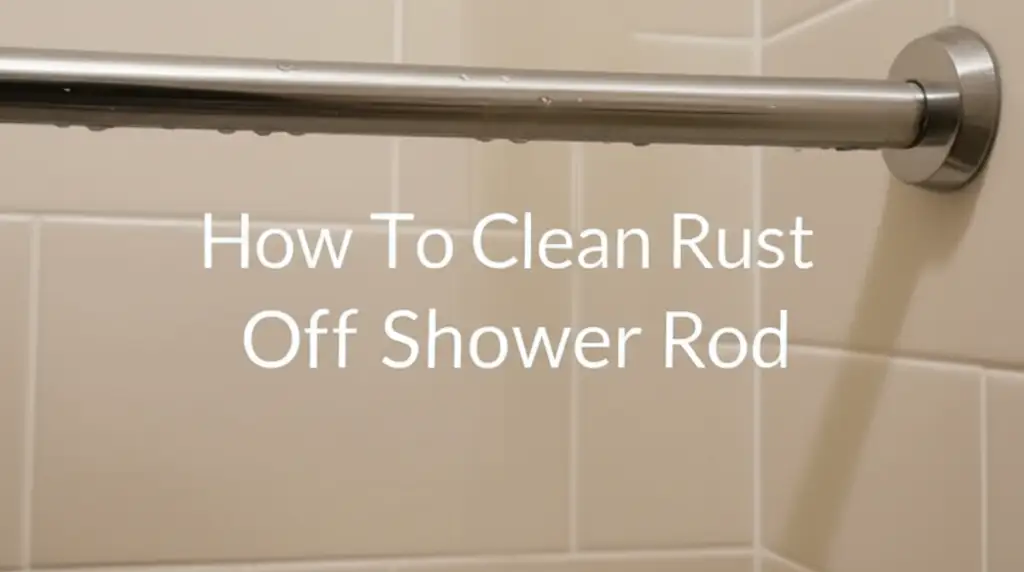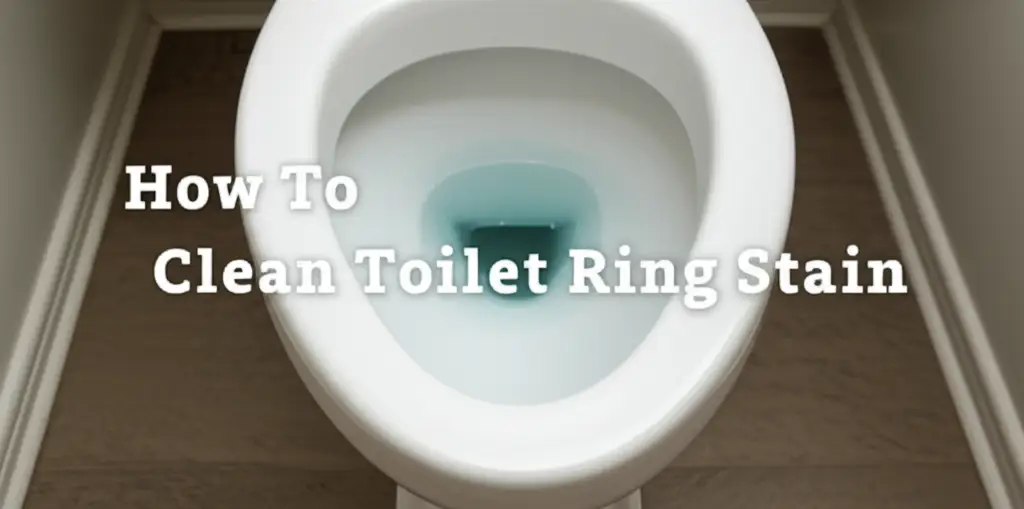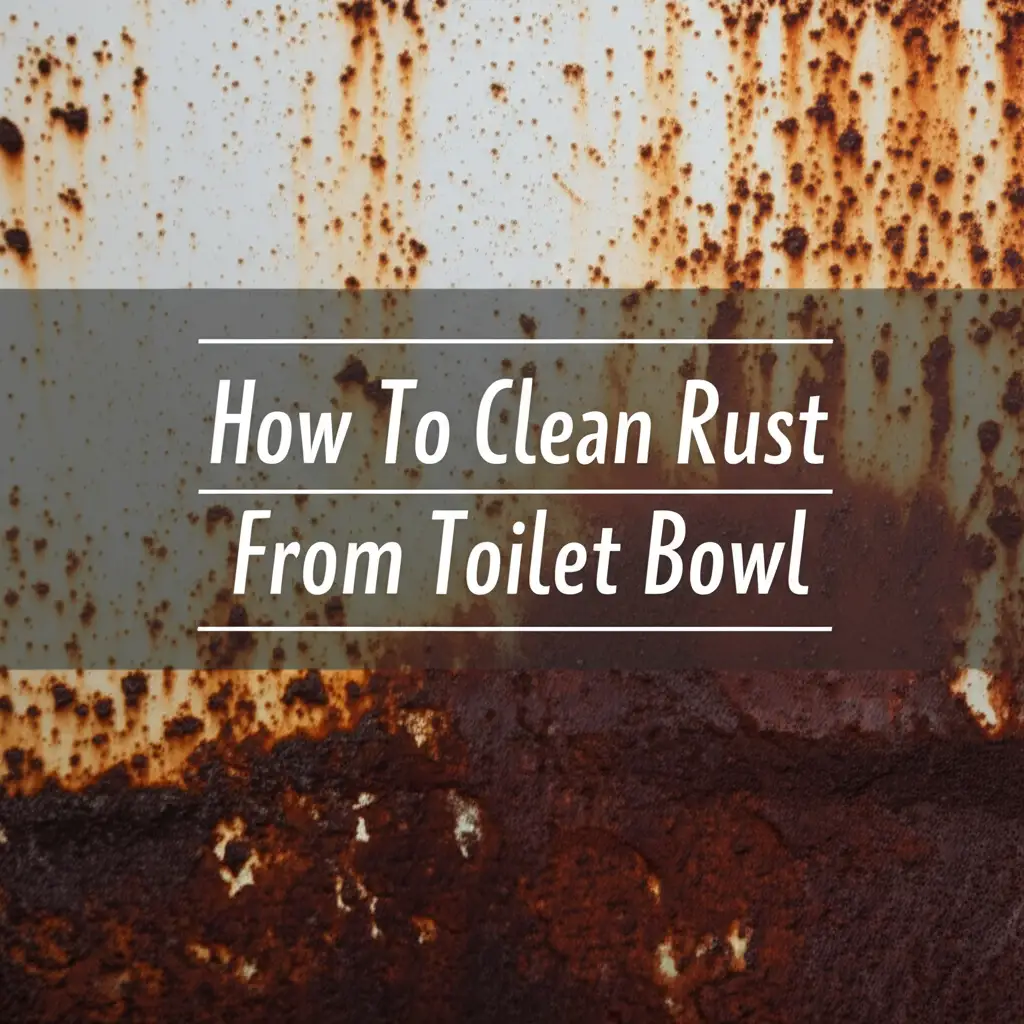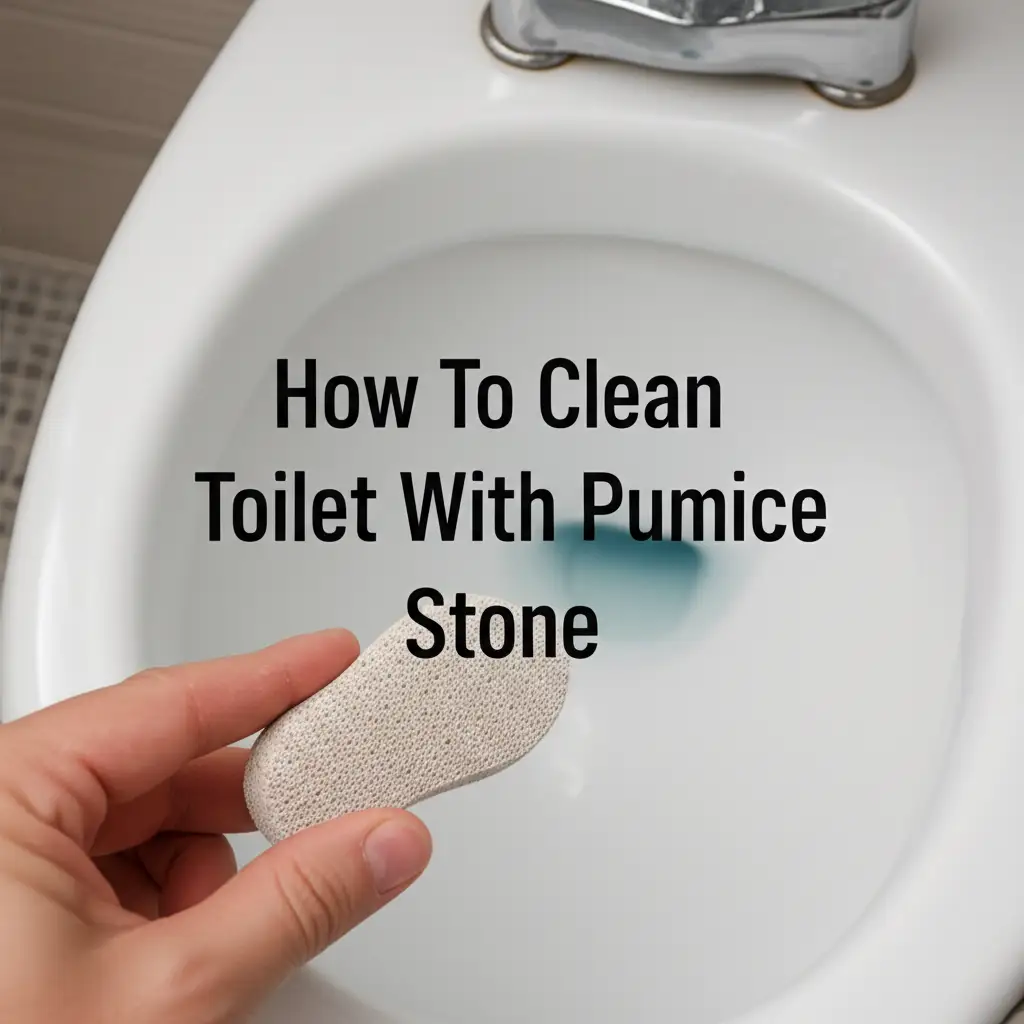· Home Cleaning · 18 min read
How To Clean Rust Off Shower Rod

Restore Your Shower Rod: How To Clean Rust Off
Rust on your shower rod can spoil the look of your entire bathroom. It is a common problem, especially in humid environments. Those unsightly orange or brown spots detract from an otherwise clean space. I understand how frustrating it feels to see your bathroom losing its shine.
This guide helps you tackle shower rod rust directly. We will explore various methods, from natural home remedies to stronger chemical solutions. You will learn the best ways to prepare your work area and protect your surfaces. We also cover specific care for different rod materials. Finally, I will share essential tips to prevent future rust from forming. Let’s make your shower rod look new again.
Takeaway
Cleaning rust off your shower rod is a simple process. You can use natural acids or mild abrasives. For tougher spots, commercial rust removers work well. Always ensure proper ventilation and protect your skin. Regular drying and maintenance prevent future rust.
To clean rust off a shower rod, apply an acidic solution like white vinegar or lemon juice, or a mild abrasive paste made from baking soda. Allow the cleaner to sit for several minutes. Gently scrub the rust away with a non-abrasive pad or cloth. Rinse the rod thoroughly and dry it completely to prevent new rust.
Why Rust Appears on Your Shower Rod and What to Look For
Rust is a common issue in bathrooms. It forms when iron or steel reacts with oxygen and water. This chemical process is called oxidation. Most shower rods contain some amount of iron or steel. This makes them vulnerable to rust. High humidity and constant water exposure in your shower create ideal conditions for rust.
You might see rust spots, streaks, or even flaking on your shower rod. Small orange spots often appear first. These spots can grow larger and turn a darker brown or reddish color. Sometimes, rust appears as drips that run down the rod. This happens when water sits on the surface for too long. Checking your shower rod regularly helps catch rust early. Early detection makes cleaning much easier. Ignoring rust allows it to spread and cause more damage. It can even stain your shower curtain or bathtub.
Different types of shower rods react differently to moisture. Chrome-plated rods resist rust better than plain steel. However, if the chrome coating gets scratched, the steel underneath can rust. Tension rods often have painted or plastic coatings. Damage to these coatings also exposes the metal, leading to rust. Always look for any signs of surface damage. This helps identify where rust might start. Preventing rust involves understanding its causes and acting quickly. This keeps your bathroom looking its best.
Essential Tools and Preparations for Rust Removal
Before you begin cleaning, gather all your necessary tools and supplies. Proper preparation makes the cleaning process smoother and safer. You need a few basic items found around your home. Having everything ready prevents interruptions. This ensures you can work efficiently.
First, protect yourself. Wear rubber gloves to shield your hands from cleaning solutions. Safety glasses are also a good idea. They protect your eyes from splashes, especially when using stronger cleaners. You will need a soft cloth or sponge for general cleaning. For more stubborn rust, a non-abrasive scrub pad or an old toothbrush works well. Avoid steel wool or harsh abrasive scrubbers. They can scratch your shower rod and remove its protective coating. This makes the rod more prone to future rust.
Next, prepare your immediate surroundings. Rust particles and cleaning solutions can drip onto your bathtub or shower floor. Lay down old towels or plastic sheeting underneath the shower rod. This protects surfaces from stains and chemical damage. You might also want a bucket of clean water nearby for rinsing. A spray bottle can be useful for applying liquid solutions. Ensure your bathroom is well-ventilated. Open a window or turn on the exhaust fan. This helps clear fumes from cleaning products. Being prepared makes the job easier and safer for everyone involved.
Natural Solutions: Gentle Ways to Clean Rust Off Your Shower Rod
Natural cleaners offer effective ways to remove light to moderate rust from your shower rod. These methods are often safer for your health and the environment. They use common household items you likely already own. I find these gentle approaches surprisingly powerful.
Vinegar and Baking Soda Power
White vinegar is an excellent natural rust remover. Its acetic acid helps dissolve rust. Baking soda is a mild abrasive that also helps lift stains. You can combine these two for a powerful cleaning paste. I often use this combination for many cleaning tasks. It works wonders when cleaning a shower with baking soda.
To use this method, mix baking soda with enough white vinegar to form a thick paste. Apply the paste generously to the rusty areas on your shower rod. Let it sit for about 30 minutes to an hour. The acid in the vinegar breaks down the rust. The baking soda provides a gentle scrubbing action. After letting it sit, scrub the area with a non-abrasive sponge or an old toothbrush. You will see the rust begin to lift. Rinse the rod thoroughly with clean water and dry it completely. This simple method is often enough for most rust spots. Combining vinegar and baking soda is a powerful cleaning strategy for many household issues.
Lemon Juice and Salt Scrub
Lemon juice is another natural acid that fights rust. Its citric acid works similarly to vinegar. Salt acts as a gentle abrasive to help scrub away the rust. This combination also creates a fresh scent, which is a bonus. I always have lemons on hand for various cleaning needs.
To make this scrub, cut a lemon in half. Sprinkle a generous amount of salt onto the cut surface of the lemon. You can also make a paste by mixing lemon juice with salt. Apply the lemon-salt mixture directly onto the rust. Rub the lemon half over the rusty spots. Let the mixture sit on the rust for a few hours, or even overnight if the rust is stubborn. The longer it sits, the more time the acid has to work. Afterwards, scrub the area with a soft brush or cloth. Rinse the rod well with water. Dry the shower rod completely to prevent new rust.
Potato and Dish Soap Trick
This might sound unusual, but a potato can help remove rust. Potatoes contain oxalic acid, which is a common ingredient in some commercial rust removers. Dish soap adds extra cleaning power. It helps break down any grease or grime. I was surprised by this method when I first tried it.
To use this trick, cut a potato in half. Apply a small amount of liquid dish soap to the cut surface of the potato. Rub the soapy potato directly onto the rusty areas of the shower rod. The potato’s rough texture and the oxalic acid combine to loosen the rust. Let the potato sit on the rust for a few hours if possible. Alternatively, you can slice a potato and place the slices directly on the rust. Secure them with plastic wrap. After soaking, scrub the area with the potato or a non-abrasive pad. Rinse the rod thoroughly. This method is particularly effective for light surface rust.
Stronger Solutions: Tackling Stubborn Rust Stains
Sometimes, natural remedies are not enough for deep-seated or extensive rust. For tougher stains, you might need to turn to stronger chemical solutions. These products are designed specifically to dissolve rust. Always use them with caution and follow safety guidelines.
Commercial Rust Removers
Several commercial rust removers are available on the market. They come in various forms, such as gels, sprays, or liquid concentrates. These products typically contain powerful acids that react with rust, converting it into a soluble form that you can wipe away. When choosing a product, read the label carefully. Ensure it is safe for the material of your shower rod. Some powerful rust removers can damage certain finishes. I always test a small, inconspicuous area first. This prevents any unwanted damage.
To use a commercial rust remover, apply it directly to the rusty area according to the product instructions. Most require you to let the solution sit for a specified time. This allows the chemicals to penetrate the rust. After the waiting period, scrub the area gently with a non-abrasive pad or cloth. You will notice the rust dissolving as you scrub. Always ensure your bathroom is well-ventilated when using these products. Rinse the shower rod completely after cleaning. Make sure no chemical residue remains. This type of product works great for general rust issues, similar to how one might clean rust from cast iron.
Oxalic Acid Cleaners
Oxalic acid is a common ingredient in many heavy-duty rust removers. Products like Bar Keepers Friend contain oxalic acid. This acid binds with iron molecules in rust, making them easier to remove. It is highly effective for stubborn rust stains. However, it requires careful handling. I have used Bar Keepers Friend for various tough stains, including rust. It helps clean rust off a Blackstone griddle effectively.
To use an oxalic acid cleaner, wet the rusty surface of your shower rod. Sprinkle the powder directly onto the rust. Add a little water to form a paste. Gently rub the paste onto the rust with a damp cloth or sponge. Let it sit for a few minutes. Do not let it dry on the surface. Scrub the area with a non-abrasive pad. Rinse thoroughly with water. Ensure all powder residue is gone. Wear gloves and ensure good ventilation when working with oxalic acid. It can irritate skin and respiratory passages.
Phosphoric Acid Products
Phosphoric acid is another strong rust-dissolving agent. It is often found in rust converters. These products not only remove rust but also create a protective coating. This coating helps prevent future rust. Phosphoric acid reacts with rust to form a black, stable compound. This compound can then be painted over. This is useful if your shower rod is a material that can be painted.
Apply phosphoric acid products according to the manufacturer’s instructions. These are usually brush-on or spray-on solutions. Allow the product to dry completely. The rust will likely turn black. This indicates the chemical reaction has taken place. You can then wipe away any residue. This method is often chosen for severely rusted items. It prepares the surface for repainting or sealing. Always use personal protective equipment, including gloves and eye protection, when handling phosphoric acid. Provide maximum ventilation during and after application.
Specific Care for Different Shower Rod Materials
Shower rods come in various materials, each requiring a slightly different cleaning approach. Using the wrong method can damage the finish or cause new problems. Understanding your rod’s material is key to effective and safe rust removal. I always check the material first before applying any strong cleaner.
Chrome and Stainless Steel Rods
Chrome and stainless steel shower rods are popular because of their durability and sleek look. They resist rust better than plain steel. However, rust can still appear if the protective coating is scratched or if water consistently pools on the surface. For these materials, it’s important to use non-abrasive cleaners. Harsh scrubbers can scratch the surface. This creates new opportunities for rust to form.
For light rust, a paste of baking soda and water often works well. Apply it and gently rub with a microfiber cloth. For more stubborn spots, the lemon and salt method is effective. When using commercial rust removers, choose products specifically labeled safe for chrome or stainless steel. After cleaning, rinse the rod thoroughly and dry it immediately with a soft cloth. You can even polish chrome rods with a car wax to add an extra layer of protection. This helps water bead off. This careful approach also applies to cleaning hard water stains on shower glass. Preserving these finishes keeps your bathroom looking sharp.
Tension Rods and Painted Surfaces
Tension rods are convenient because they require no drilling. Many tension rods have a painted or plastic coating over a metal core. This coating provides the main rust protection. If this coating chips or scratches, the metal underneath is exposed. This quickly leads to rust. Cleaning painted or coated rods requires extra care to avoid further damage to the finish.
For these rods, avoid any abrasive cleaners or scrubbers. They can strip off the paint or plastic. Stick to gentler solutions like vinegar or lemon juice. Apply the cleaner with a soft cloth or sponge. Gently wipe the rust away. Do not rub too hard. If the rust is severe and the paint is flaking, you might need to touch up the paint after cleaning. Use rust-inhibiting paint designed for metal. Allow it to dry completely. This restores the rod’s appearance and protection. A new coat of paint also helps seal the metal. This prevents new rust from forming.
Plastic-Coated Rods
Some shower rods are entirely plastic or have a very thick plastic coating. These rods are generally rust-proof themselves. However, rust stains can transfer to them from rusty shower curtain rings or other metal objects. The plastic itself does not rust, but it can absorb rust pigments. Cleaning these rods involves removing the stain, not the rust from the material.
For plastic-coated rods, gentle cleaners are best. A paste of baking soda and water or a solution of vinegar and water often removes rust stains effectively. Apply the cleaner and let it sit for a few minutes. Then, gently wipe or scrub with a soft cloth. Avoid abrasive pads, as they can scratch the plastic surface. If the stain is stubborn, a magic eraser can be effective. Test it on an inconspicuous spot first to ensure it does not dull the finish. Rinse the rod well and dry it. This maintains the smooth, protective layer. It keeps your shower rod looking clean and new.
Post-Cleaning Steps and Rust Prevention Strategies
Cleaning rust is a great start, but preventing it from returning is just as important. A few simple habits and preventative measures can keep your shower rod rust-free for longer. I make these steps part of my regular bathroom maintenance. This saves me effort in the long run.
After cleaning any rust, always rinse the shower rod thoroughly with clean water. This removes all cleaning solution residue. Leftover chemicals can attract dirt or even cause new corrosion over time. Once rinsed, dry the shower rod completely. Use a soft, clean cloth. Water left on the rod is the main cause of rust. Paying attention to thorough drying makes a big difference.
Regular Maintenance
Regular, quick maintenance checks are your best defense against rust. After each shower, wipe down the rod with a dry towel. This removes standing water. If you see any small rust spots starting to form, address them immediately. A quick wipe with a vinegar-soaked cloth can prevent minor spots from becoming major problems. This proactive approach saves you time and effort later. It also keeps your bathroom looking consistently clean.
Applying Protective Coatings
Consider applying a protective coating to your shower rod, especially if it is prone to rust. A clear wax, like car wax, can create a barrier against moisture. Apply a thin layer of wax after cleaning and drying the rod. Buff it to a shine. This makes water bead up and roll off the surface. Some products offer clear protective sprays designed for metal. These create a transparent barrier. Always ensure the product is safe for use in humid environments. Reapply these coatings periodically. This keeps the protective layer strong.
Improving Bathroom Ventilation
Moisture is the primary driver of rust in bathrooms. Improving ventilation helps dry out the air and surfaces faster. Turn on your bathroom exhaust fan during and after every shower. Keep it running for at least 15-20 minutes after you finish. If you do not have an exhaust fan, open a window. This allows humid air to escape. Proper ventilation reduces condensation on surfaces, including your shower rod. This lowers the chances of rust forming. It also helps prevent other moisture-related issues, like mold. Cleaning black mold off wood is a much tougher task than preventing rust. A dry environment is a clean environment.
Safety Measures When Cleaning Rust
Cleaning rust often involves chemicals or abrasive actions. Prioritizing safety protects you and your bathroom. I always follow safety precautions meticulously. This ensures a safe cleaning experience. Ignoring safety steps can lead to injuries or property damage.
First, always ensure proper ventilation. Open windows, turn on exhaust fans, or open the bathroom door. Cleaning solutions, especially commercial rust removers, can produce fumes. Inhaling these fumes can cause respiratory irritation or other health problems. Good airflow disperses these fumes. This makes your cleaning environment much safer. Never clean in a completely closed-off space.
Next, protect your skin and eyes. Wear rubber gloves when handling any cleaning solutions. Even natural cleaners like vinegar or lemon juice can irritate sensitive skin. Stronger chemical cleaners can cause burns. Safety glasses or goggles are essential. Splashes of cleaning solution can harm your eyes. If any solution gets on your skin or in your eyes, rinse immediately with plenty of water. Seek medical attention if irritation persists.
Never mix different cleaning chemicals. Combining products like bleach and ammonia can create toxic gases. Always read product labels carefully. Follow the instructions precisely. Do not experiment with chemical mixtures. Stick to one product at a time. If you use multiple cleaners, rinse the surface thoroughly between applications. This prevents dangerous reactions. Also, keep all cleaning products out of reach of children and pets. Store them in a secure cabinet.
Finally, think about waste disposal. Some rust removers might have specific disposal guidelines. Do not pour strong chemicals down your drain without checking if it is safe. Follow local regulations for disposing of chemical waste. Properly dispose of used rags and sponges too. This ensures they do not contaminate other surfaces or cause harm. Taking these safety measures makes rust cleaning a secure and effective process.
FAQ Section
Can I use steel wool on my shower rod?
No, you should not use steel wool on most shower rods. Steel wool is too abrasive. It can scratch the surface of chrome, stainless steel, or painted rods. These scratches remove the protective coating. This makes the metal underneath much more likely to rust again. Always choose non-abrasive scrub pads or soft cloths.
How often should I clean my shower rod to prevent rust?
For prevention, wipe your shower rod dry after every shower. This removes standing water, which is the main cause of rust. For a deeper clean, inspect the rod weekly. Address any small rust spots immediately with a mild cleaner. This consistent effort keeps significant rust from forming.
Will rust damage my shower curtain?
Yes, rust can damage your shower curtain. Rust from the rod can transfer to the curtain fabric. It creates stubborn orange or brown stains. These stains are very difficult to remove from fabric. Regular cleaning of your shower rod protects your shower curtain from unsightly rust marks.
What causes rust on a shower rod?
Rust on a shower rod is caused by the oxidation of iron or steel. This happens when the metal is exposed to oxygen and moisture. The high humidity and constant water splashes in a bathroom create the perfect environment for rust to form on metal shower rods.
Is it better to replace a rusty shower rod or clean it?
For light to moderate rust, cleaning is usually effective and more cost-efficient than replacing the rod. If the rust is severe, has eaten through the metal, or the rod is structurally compromised, replacement is the better option. Cleaning is always worth trying first.
Can I paint over rust on a shower rod?
You should not paint directly over rust. The rust will continue to spread under the paint. First, you must remove as much rust as possible. Then, use a rust-inhibiting primer specifically designed for metal. After priming, you can apply a rust-resistant paint. This process creates a lasting finish.
Conclusion
A clean, rust-free shower rod greatly improves the appearance of your entire bathroom. You have now learned various effective methods for how to clean rust off your shower rod. From gentle natural remedies like vinegar and baking soda to powerful commercial solutions, you have options for every rust challenge. Remember, choosing the right method depends on the severity of the rust and your shower rod’s material.
Beyond cleaning, proactive measures are key to keeping your shower rod looking its best. Regular drying, applying protective coatings, and ensuring proper bathroom ventilation are simple yet powerful ways to prevent future rust. Embracing these habits saves you time and effort in the long run. A well-maintained shower rod not only looks good but also contributes to a healthier bathroom environment. Take action today, apply these tips, and enjoy a sparkling clean shower space.
- rust removal
- shower cleaning
- bathroom maintenance
- rust stains
- home improvement




